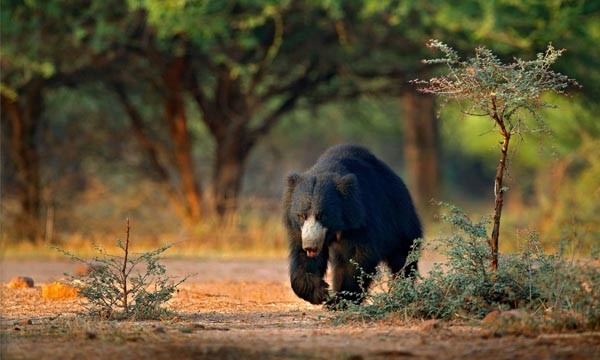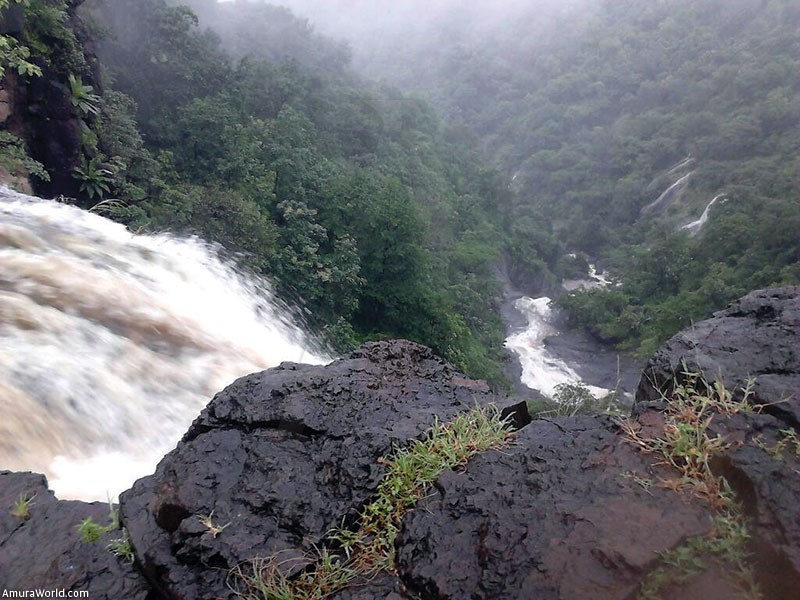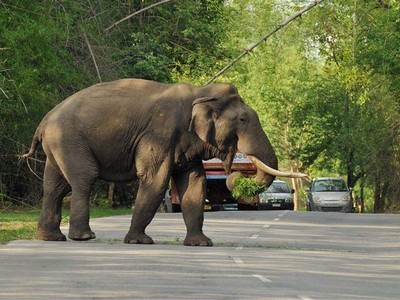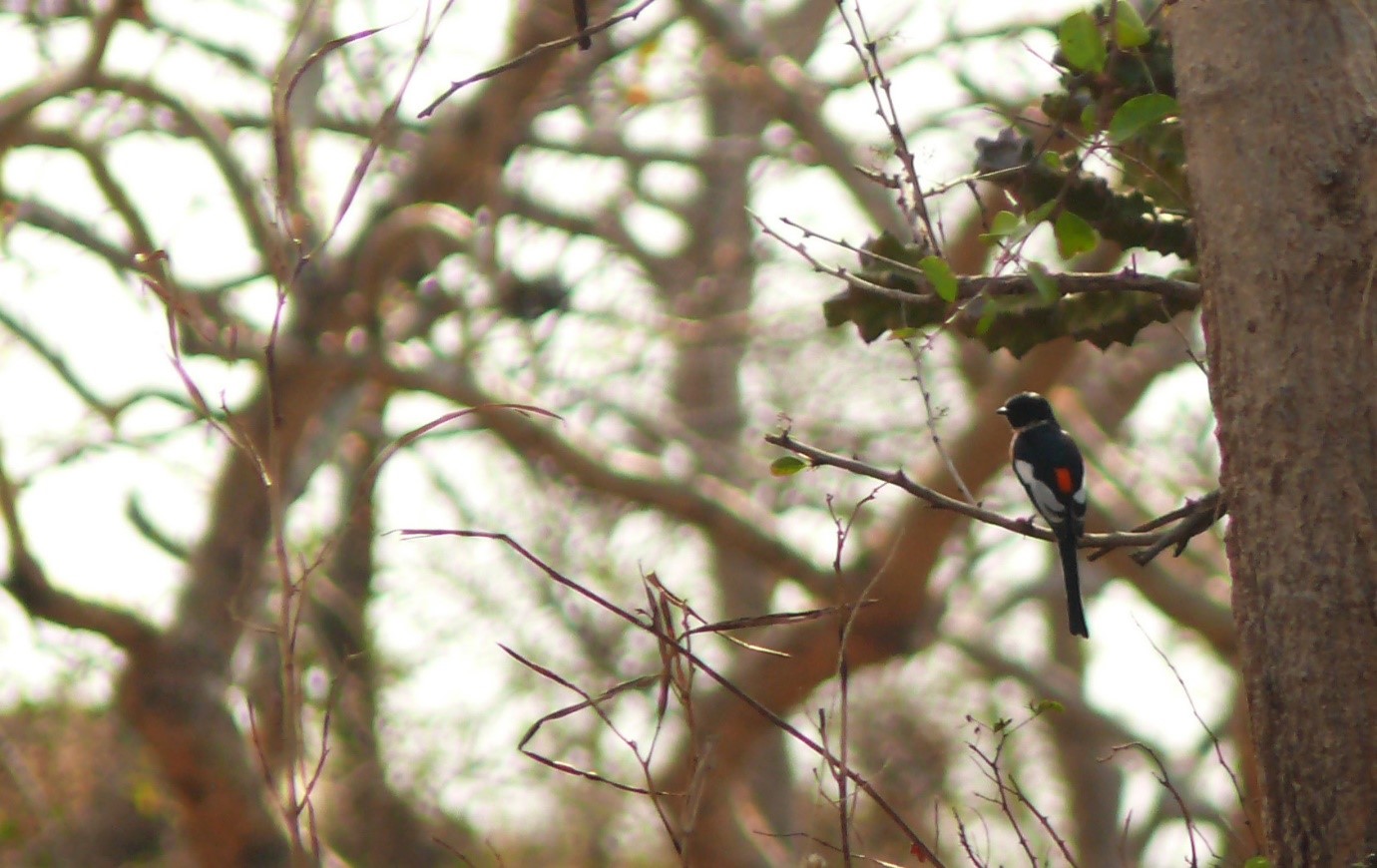- Private car and driver in Delhi / India
- +91-8447445445
- info@discoverindiabycar.com sugar.ankit@yahoo.com
 +91-9818434712
+91-9818434712
Western Ghats offers a lively ambience at gautala wildlife sanctuary
The magnificent Guatala Autramghat forest was designated as a wildlife sanctuary in 1986 in order to safeguard the incredibly interesting and diverse animals that live there. The Southern Tropical Dry Deciduous Forest is found in the lowlands; this is reflected in the grasses that are found on the plateau. In addition to a range in the Jalgaon district’s Chalisgaon block, the Aurangabad district headquarters is in charge of the sanctuary.
Because of the large number of species that need protection, the sanctuary was established in 1986. Situated between the Satmala and Ajantha hill ranges, on the eastern flanks of the Western Ghats, it encompasses an approximate area of 26,000 km². The Southern Tropical Dry Deciduous Forest in the valleys and the grasslands of the plateau represent the sanctuary. Both the Aurangabad district headquarters and a range in the Chalisgaon block of the Jalgaon district are accountable for the management of the sanctuary’s efficient operation. Not only does the sanctuary and its surroundings have a century-long history and tradition, but they also have a high level of biodiversity.
Preserving and enhancing biodiversity

This 26,062-hectare nature reserve has been sacred since ancient times, and the Maharashtra government declared it a sanctuary in the 1980s. It is located roughly 72 km from the quickly growing metropolis of Aurangabad. It is a tropical dry deciduous forest that is home to a diverse range of animals, birds, and reptiles. There are also highly sought-after medicinal plants in the area. Its most prevalent types are large and medium-sized trees like khair o dhawada and anjan. Tannins and ghatti gum, which are widely used in Indian and international businesses, are harvested from these trees. Uphorbia is a common plant species that is highly hazardous. This plant produces a latex that is useful for paints and other manufactured goods.

There is more humid plant and animal life in river valleys. One such species is Terminalia arjuna, which is commonly referred to as arjun. The most important element in India’s textile industry, this native tree provides nourishment for silkworms. It can also be used medicinally for a variety of ailments, including as poisoning and insect stings, as well as for the control of blood pressure, asthma, and cardiovascular health.
The sandalwood, also known as the chandan tree, is a fragrant native tree that is frequently felled for its essential oils and medicinal components. These are incorporated into ceremonies and rituals in a fashion that is comparable to the perfume industry.
A source of life

Despite being designated as a dry zone, this region is home to a wide variety of plant and animal life that supports several species. A diverse range of mammals can be seen in this forest, including the sloth (also called the chinkara or Indian gazelle), wild boars, panthers, bats, rusty-spotted cats, monkeys, viverrids, barking deer, nilgai, or blue bull from India, sambar deer, foxes, jackals, langur, wolves, leopards, and many more.

This region is home to about 230 different kinds of birds, the majority of which are waders like ibis, spoonbills, cranes, and storks. Furthermore, numerous species of galliformes, quail, peacock, and common pochard have also been documented.

Reptiles, such as Indian rat snakes, pythons, keelbacks, and kraits, make up a significant percentage of the sanctuary’s wildlife. A large number of Bengal or Indian monitor lizard specimens are also present.
Fauna:
Numerous wild species, including animals, birds, and reptiles, find sanctuary at the Gautala Wildlife Sanctuary. These creatures include the following: bison, nilgai (blue bull), monkey, chital, peacock, bear, sambar, barking deer, wild boar, bear, wild dog, wild cat, and panther. Among the about 230 bird species are storks, cranes, and spoonbills; some of these species migrate. The rat snake, python, keel black viper, krait, and cobra are among the reptiles that can be observed.
Weather:
Throughout the year, temperatures typically range from 9 to 40 degrees Celsius, with the best weather occurring in the winter months of October through February. At its peak point, temperatures were measured at 46 °C (114 °F). The lowest temperature ever recorded was two degrees Celsius. During the monsoon season, which runs from June to September, the majority of rain falls. It usually rains between 9.0 and 693 millimeters per month. Every year, 725 millimeters of rain fall on average.
Best Time To Visit
August through February is the ideal time of year to go.
How to reach:
- By air: The closest airport is located 55 kilometers from Kannad in Aurangabad.
- By train: Kannad is 55 kilometers from Chalisgaon on the Mumbai-Nagpur rail route.
- By road: It is three kilometers from the closest town, Chalisgaon, which is twelve kilometers away.
Conclusion
There is a substantial indigenous population in this area, and they have long experienced prejudice, ill health, and educational disparities. The underlying cause of their forced migration to cities in quest of daily wage job is these structural challenges.
FAQs:
Q1. What might one expect to observe in the Gautala Wildlife Sanctuary?
A. Visitors to the Gautala Wildlife Sanctuary can take nature hikes over expansive stretches of lush deciduous forests, which are home to a variety of unusual and exotic plant species. The sanctuary also provides a haven for a range of animals, including as bears, sambar, wild dogs, panthers, nilgai, and a remarkable array of birds and reptiles.
Q2. Is Gautala Wildlife Sanctuary a suitable destination for ecotourism visitors?
A. The Gautala Wildlife Sanctuary is a haven for people who have a great respect for environment. Because of its great variety and intriguing animal interactions, this place is a haven for nature enthusiasts and those who appreciate the world’s natural treasures. It also provides a tranquil environment.
Q3. What is the procedure for reaching the Gautala Wildlife Sanctuary?
A. The Gautala Wildlife Sanctuary is conveniently located, about 15 or 20 kilometers from the villages of Chalisgaon and Kannad, respectively. Visitors can start their journey conveniently at the Kannad gateway, which provides breathtaking views of Maruti Temple and Chandan Nala.











